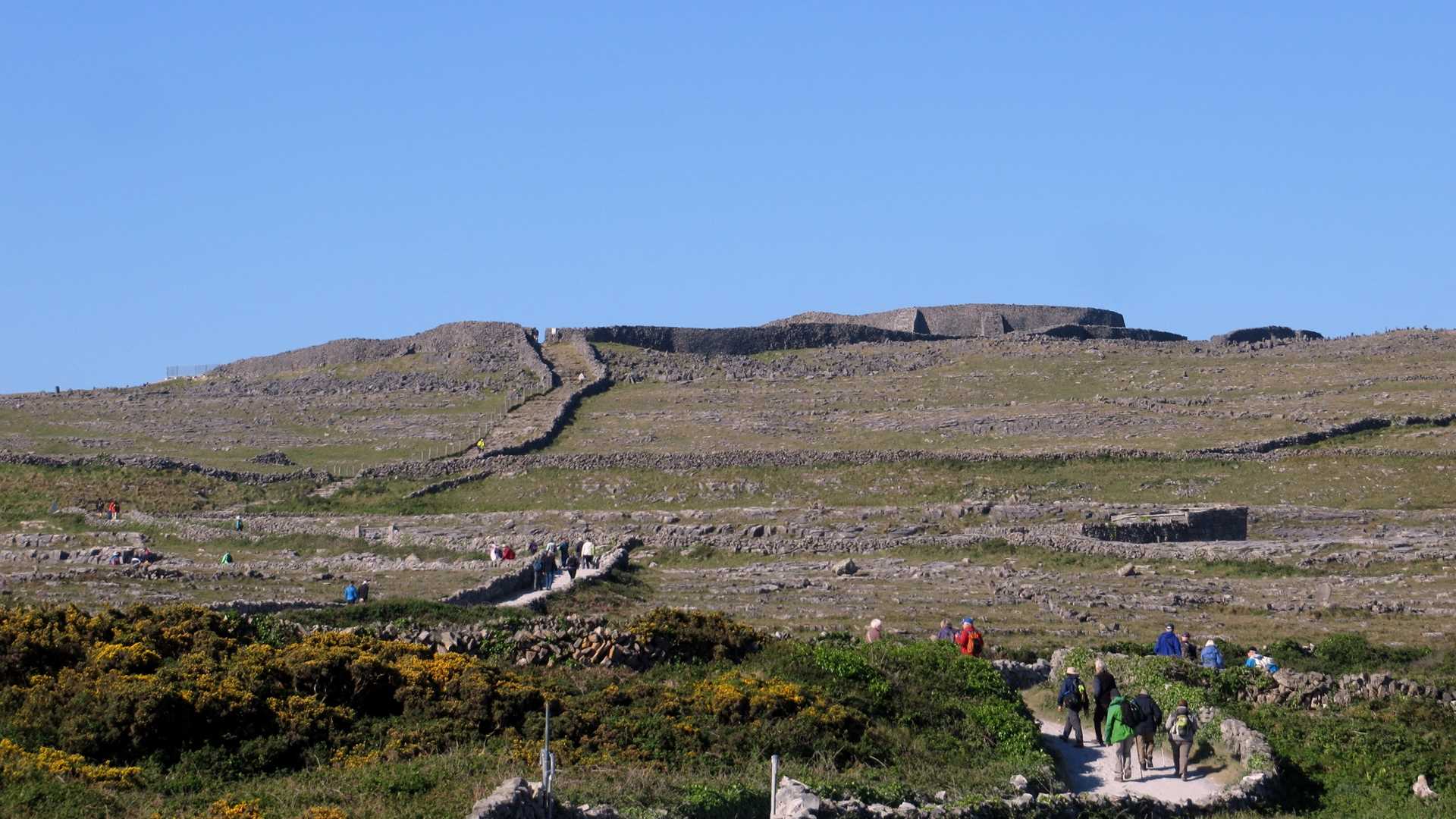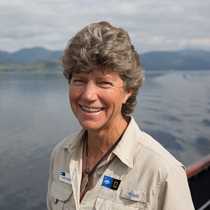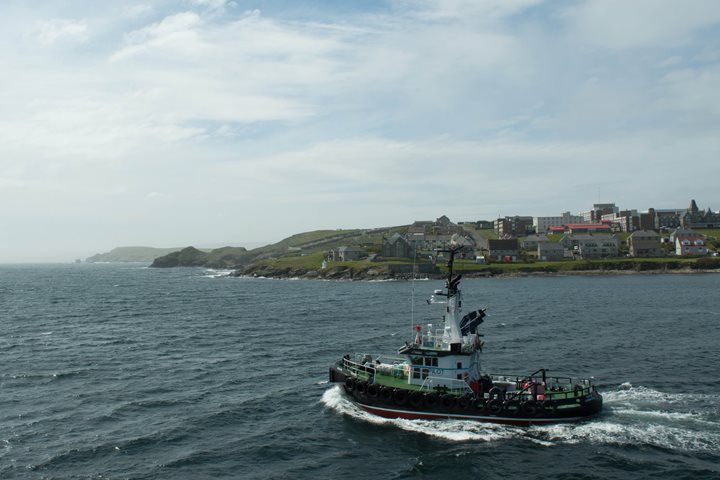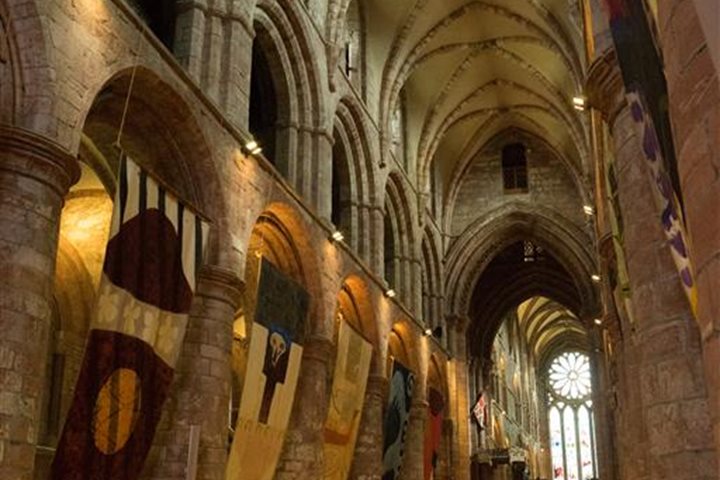Today we explored the Aran Islands, once again enjoying blue skies and warm, sunny weather. The Aran Islands stretch across the mouth of Galway Bay in Western Ireland and consist of three islands: Inis Mór (Large Island), Inis Meáin (Middle Island), and Inis Oírr (Eastern Island).
We arrived on Inis Mór (or Inishmore) shortly after breakfast. Some guests set off immediately to explore Dún Aengus, an impressive stone fort, while others went on a tour of the island, traveling along the seven miles of road that make up the island’s entire road network.
Both groups saw some of the 5,000 miles of dry stone walls that separate small pastures and fields. The walls of this human-built landscape were built without mortar, and the soil for the fields was created by mixing sand, seaweed, and manure, and spreading it over the limestone bedrock that forms the island. Not all of the 340-million-year-old limestone is covered with soil and limestone pavement can still be seen in many places where it’s been eroded into blocks, or clints, that are separated by deep fissures called grykes. Fossils are often visible in the stone too. All of the Aran Islands are known for their unique vegetation, which includes species from both Arctic-alpine and Mediterranean regions.
For those of us who went on the tour of the island, a half-mile walk soon brought us to the heights of Dún Aengus where we joined the rest of the group. This triple-walled fort covers almost 15 acres and was occupied from around 1500 B.C to 1000 A.D. Although Dún means Fort in Irish/Gaelic, this Dún was multifunctional over the centuries, not only serving as a citadel for defense, but also as a living space and possibly ceremonial site and/or tribal gathering area. Standing in the inner enclosure of Dún Aengus with the massive walls behind, we could look out to the sea along the impressive cliffs of Inis Mór.
In the afternoon we headed across to Inis Oírr (or Inisheer) to explore. This smaller island was also formed from limestone and has lots of dry stone walls that crisscross across the land. The ruins of a 15th-century stone fort, built during the O’Brien dynasty, stand on the high point of the island. The O’Brien’s ruled the island and guarded the Galway Bay against pirates and plunderers. A walk to the fort provided us with more wonderful views of Ireland’s western coast.
After dinner we passed along the Cliffs of Moher, a towering rock face that stands at 702 feet high and is made of sandstone, siltstone, and shale. Seabirds nest along these cliffs and we saw guillemots, razorbills, kittiwakes, and more. It was a wonderful ending to our day in the Aran Islands. Now off to Connemara!







